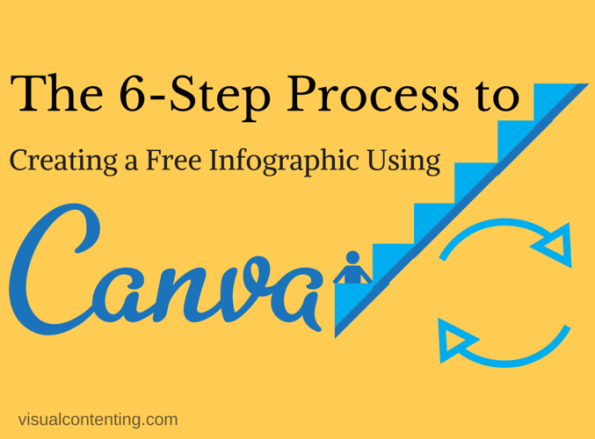The COVID-19 pandemic remains a significant concern in many parts of the world. However, vaccine rollouts are underway, and experts are gaining more knowledge about treating people with the virus and preventing complications. Decision-makers in many industries have their sights on stimulating recovery during these challenging times.
There are countless ways to kickstart that process, but high-quality, relevant content will undoubtedly play a vital role in such efforts. Here are some useful examples that marketing professionals can take inspiration from when designing their campaigns.
1. Highlighting Hospital Safety
Estimates suggest that by June 30, 2020, 41% of adults in the United States had avoided or put off emergency or routine medical care due to COVID-19-related fears. That’s understandable to a degree since public health experts frequently identified medical facilities as places of higher than average virus transmission and spread.
However, it’s one thing for a person to delay an annual wellness check when they’re feeling fine and a wholly different matter if an individual experiences severe chest pain while exercising and decides there’s no need to visit the emergency room. Well-crafted content can explain what health care facilities do to keep people safe. Other customer-facing industries can adopt a similar approach to encourage business.
The people involved with providing content for Johns Hopkins Medicine understood that clear, authoritative materials could help people feel more comfortable attending medical care facilities. The organization created an infographic-based landing page to take patients through the procedures that occur before and during an appointment.
For example, the page explains mask guidelines, including which types people cannot wear. It also mentions that patients can use online portals to take care of some administrative procedures that would normally occur in person.
The final section of the content goes over what people can do to stay safe at home. The tips range from cleaning surfaces frequently to practicing stress relief and social distancing. This example of thorough but accessible content should help people feel more at ease before medical visits. They can cause anxiety in any case, but such nervousness should decrease when people realize facility staff is well-versed in keeping the premises as safe as possible.
2. Giving Car Buyers More Options and Education
Many people may feel ready to buy vehicles but hold off after determining it seems too unsafe at the moment. That’s probably why Carvana — a company that urges people to skip dealerships and buy cars online — had such a successful year in 2020.
Carvana’s system allows people to choose and reserve vehicles online, then either pick them up from automated machines or schedule safe, contact-free home deliveries. The company’s financial statements indicated a 43% increase in cars sold and a 65% increase in revenue during 2020.
However, many customers still want some dealership interactions, particularly when choosing certain models over others. Interactive content could help them do that from home.
Skoda responded early to the COVID-19 crisis by offering a fully remote experience for its virtual showroom. Company representatives worked from home but could walk people through live demonstrations of different vehicles.
Skoda’s approach with the virtual content was also heavily educational. The idea was that even if someone is not in the market for a vehicle immediately, they’ll need reliable guidance to reach their major purchasing decision.
More recently, the car brand expanded the content, allowing people to access it at any time with self-guided experiences. For example, accompanying audio and video files let people learn more about their vehicles of choice. They can view a car’s technical specifications or see it from various angles. An online tool also enables customizing a model with available features and extras.
This method doesn’t eliminate in-person contact. Interested buyers schedule test drives online, which occur at dealerships. However, it allows people to participate in the research and exploration parts of vehicle buying at home. That option could convey that dealerships are ready and able to inform purchasers safely.
3. Responding to Customers’ Needs and Expectations
The coronavirus crisis caused numerous supply chain challenges. For example, many Asian countries that were among the first to go into severe lockdowns provide high percentages of electronics components to other areas of the world. COVID-19-related restrictions temporarily closed some factories and brought workforce capacity restrictions to the ones allowed to keep operating.
People flocked to stores to stock up on in-demand items, like hand sanitizer, disinfecting wipes, masks and toilet paper. Since many consumers bought more than they needed, others missed out. Once manufacturers learned what buyers wanted most, they often kept up to 10% more inventory than the recommended targets. That strategy allowed them to cope with demand spikes more reliably.
The COVID-19 pandemic caused a tremendous increase in people buying merchandise — often to cope with their changed circumstances. For example, many consumers realized that using small sections of their kitchen tables for office spaces lacked long-term feasibility. Thus, they looked for furniture retailers that would deliver to their homes.
It became especially important for people to get trustworthy information about how much it would cost to have bulky items shipped during the pandemic. The desire for those details is not likely to wane after COVID-19 subsides. Representatives from IKEA understand that well and publish straightforward content to help.
The Irish version of its website features a dedicated delivery page that breaks down the different shipping options and costs. For example, one possibility is that people can select the desired day for product delivery, picking one from four to 30 days after ordering. That offering applies to large items, and pricing starts at €50.
The content also specifies that current COVID-19 restrictions prohibit delivery personnel from coming inside customers’ houses. However, they can bring items to the main external entrance. Giving people clear information helps them have better purchasing experiences by minimizing surprises. When people have favorable impressions of IKEA, they’ll be more likely to shop there during and after the pandemic.
4. Catering to Customers’ Changed Options and Preferences
The travel and hospitality industries were among the hardest hit during the pandemic. Government leaders worldwide banned nonessential travel, and some introduced mandatory quarantines that made people think twice, even if they had valid reasons for their journeys.
However, with economies starting to reopen, many tourism boards have launched staycation campaigns, encouraging people to embrace the idea of staying close to home. That’s crucial, especially with many authorities still discouraging international travel but permitting regional outings.
Plus, some people may feel more comfortable about taking shorter, nearby trips for a while, even once authorities give them the go-ahead to do otherwise. A recent study showed that 69% of respondents want to travel closer to home for the foreseeable future. Consumers may not return to pre-COVID travel behaviors quickly. Content to address that reality could help travel and hospitality businesses bounce back after a tough period.
Marriott International’s per-room revenue and occupancy demand fell by 90% in April 2020 while people tried to figure out what the novel coronavirus meant for international travel. Now, brand leaders recognize that their path in the new normal involves giving personalized travel suggestions related to what people are able and willing to do.
Marriott partnered with Verizon International for its Browse, Shop and Buy campaign, which reportedly led to tens of thousands of bookings since its June 2020 launch. The initiative’s goal was to target people making spontaneous room reservations on regional trips. Individuals receive personalized hotel and rental property suggestions based on how far they want to travel.
Another facet of the marketing effort was aimed at people looking for safe, clean places to spread out for extended periods. For example, maybe an author wanted to work in peace in a hotel rather than in a home occupied by four other adults.
Excellent Content Creates Conditions for a Post-Coronavirus Comeback
These examples show how top-quality content can help numerous industries experience brighter futures after the COVID-19 threat lessens. Companies are most likely to get the best results if leaders consider the hesitations people may face. Creating relevant and trustworthy content to aid current and potential customers can help businesses get back on track.
Devin Partida writes about topics concerning tech and the internet. She is also the Editor-in-Chief of ReHack.com.


